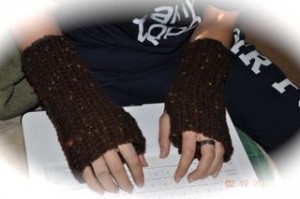Departments
Search
Follow Us
Tags
Latest Highlights
IBH
Handmade Inventory Tracking Part 2
 A little ways back I wrote a posting entitled, “Handmade Inventory Tracking-Part 1“. The focus was on tracking your supplies. For part 2, I wanted to focus on tracking the finished product. For many artists, this is not something we think too much about when we first begin. Once we have a few things created we decide to break down and put the time/effort into tracking our creations. Paperwork is not something any of us like to do, but it is a “necessary evil” of doing business.
A little ways back I wrote a posting entitled, “Handmade Inventory Tracking-Part 1“. The focus was on tracking your supplies. For part 2, I wanted to focus on tracking the finished product. For many artists, this is not something we think too much about when we first begin. Once we have a few things created we decide to break down and put the time/effort into tracking our creations. Paperwork is not something any of us like to do, but it is a “necessary evil” of doing business.
Now just like the supply tracking, product tracking will be specific to your artistic area of expertise. The amount and type of information you wish to track is unique to each person’s business needs. I find that using a spreadsheet program is one of the easiest ways to create a custom inventory list. It will allow you to do calculations that update automatically, along with a multitude of formatting options. There are also a variety of templates that you can use as a starting point and customize them as needed. This will save time and effort for those that do not enjoy this type computer work.
The columns of information that I find useful to track are:
Product ID: IS2012BM [Product type, year created, colors. This could be anything that makes sense for you]
Description: Infinity Scarf – Caron Simply Soft (Blue Mint) (Double Crochet) (F) [Here I also include the stitch used and the crochet hook size for future reference]
Unit Price: $19.00
25% Discount: $4.75 [ this is auto calculated ‘Unit Price’ * 0.25 , for reference if I create a coupon]
Quantity in Stock: 1
Inventory Value On Hand: $19.00 [ this is auto calculated ‘Unit Price’ * ‘Quantity In Stock’ ]
Date Posted: [ this is the date I post the product to my shop ]
Date Sold: [date the order is placed and customer name. If applicable, I also make notes here if; ‘donated to whom, and the date’; ‘gift, to whom, and the date’]
Materials Used: 2 Blue Mint [number of skeins and color , this reminds me what supplies I need for a similar product]
Hrs. to Create: 6 [another reminder for the future]
Weight: 1 lb. [for shipping purposes]
Dimensions: 62×6 [for listing in my post and reference for the future]
Shipping Charges: [cost to ship item, I make note here if an item was not shipped and why]
Below is a mock-up with some examples of the types of entries that you could have.

At the bottom of the table I have a row that totals some of the columns and is called Total Inventory Value. This allows me to see the overall picture.
For example, the columns you might total could be:
‘Unit Price’ [total value of everything created]
‘Quantity in Stock’ [total number of items for sale, which should match the count in your shop]
‘Inventory Value On Hand’ [total value of items currently available]
Lastly, below the table is where I make notes regarding coupons, tags I use for my subcategories on my shop, etc.
SUMMARY:
As I mentioned in my previous post, different businesses require different levels of product inventory tracking. The example I have outlined above can be expanded or simplified.
If you have anything special that you do when tracking your products, please feel free to share it in a comment. I enjoy learning new ways of doing things, and possibly finding ways to make the business side of things a little less time consuming.
Written by Anntoinette Fuentes (aka Cr8tive Lefty)
Tags: artists, Handmade, Handmade Artists, handmade supplies, inventory spreadsheet, inventory tracking, product inventory spreadsheet, sell handmade, selling tips
Posted in Creative Breakroom, Handmade Artisans, Information, Selling Tips
6 Responses to “Handmade Inventory Tracking Part 2”
Leave a Reply
You must be logged in to post a comment.


Great ideas! Thanks for sharing!
I commend you for this very organized method of product and supply tracking. It is so informative and impressive! Thanks so much for sharing once again.
Great ideas! and well written too! Thanks for sharing this.
I appreciate the kind comments and support. I know it isn’t the most exciting stuff to read and not always a big ‘crowd pleaser’. It also takes more time than I thought to try and format it in a way that made any kind of sense. The featured posts change so often lately, it probably took me more time to write it, than anyone will see it (chuckling), but that is cool. Hopefully I will get faster at writing these 🙂
[…] Go to Source Author: Cr8tiveLefty […]
[…] Go to Source Author: Cr8tiveLefty […]